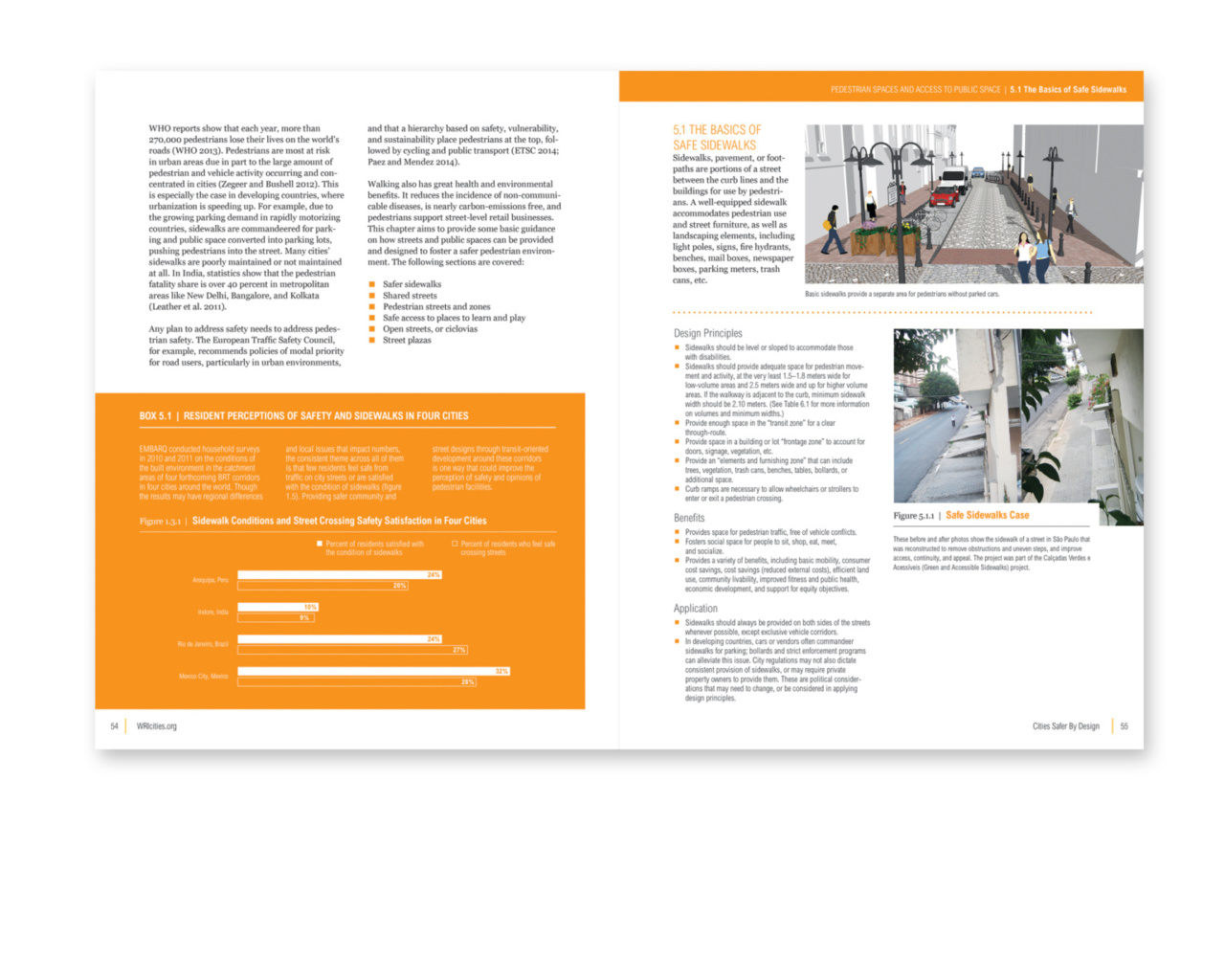World Resources Institute, Cities Safer By Design
BACKGROUND
Every year, over 1.2 million people, mostly pedestrians, die in traffic crashes globally, and that number is growing every year. A common response to this issue is to build roads and design communities for automobiles. Yet this short-term solution only eases traffic or improves safety for drivers, stimulates more growth in car use, and leads to more traffic fatalities. But cities can design streets and neighborhoods to be safer, emphasizing pedestrians, bicycling, and mass transport and reducing speeds and unnecessary use of vehicles. WRI Ross Center for Sustainable Cities created a guide to provide real-world examples and evidence-based techniques, helping cities save lives from traffic fatalities through improved street design and smart urban development. This hands-on guide taps examples from cities worldwide and includes 34 different design elements to improve safety and quality of life.
TREATMENT
WRI has an established, respected brand with a clear visual language, but the contents of this report fell way outside of their usual long-form document structure. 75% of the 104 page report is comprised of page-length case examples, which include an introduction, a 3D rendering, a photographic example, and supporting bullet points. A new page grid was designed to contain these examples and structure the content in a way that was easy to scan and understand from spread to spread. Creative Commons licensed photos were sourced and used for section breaks.






